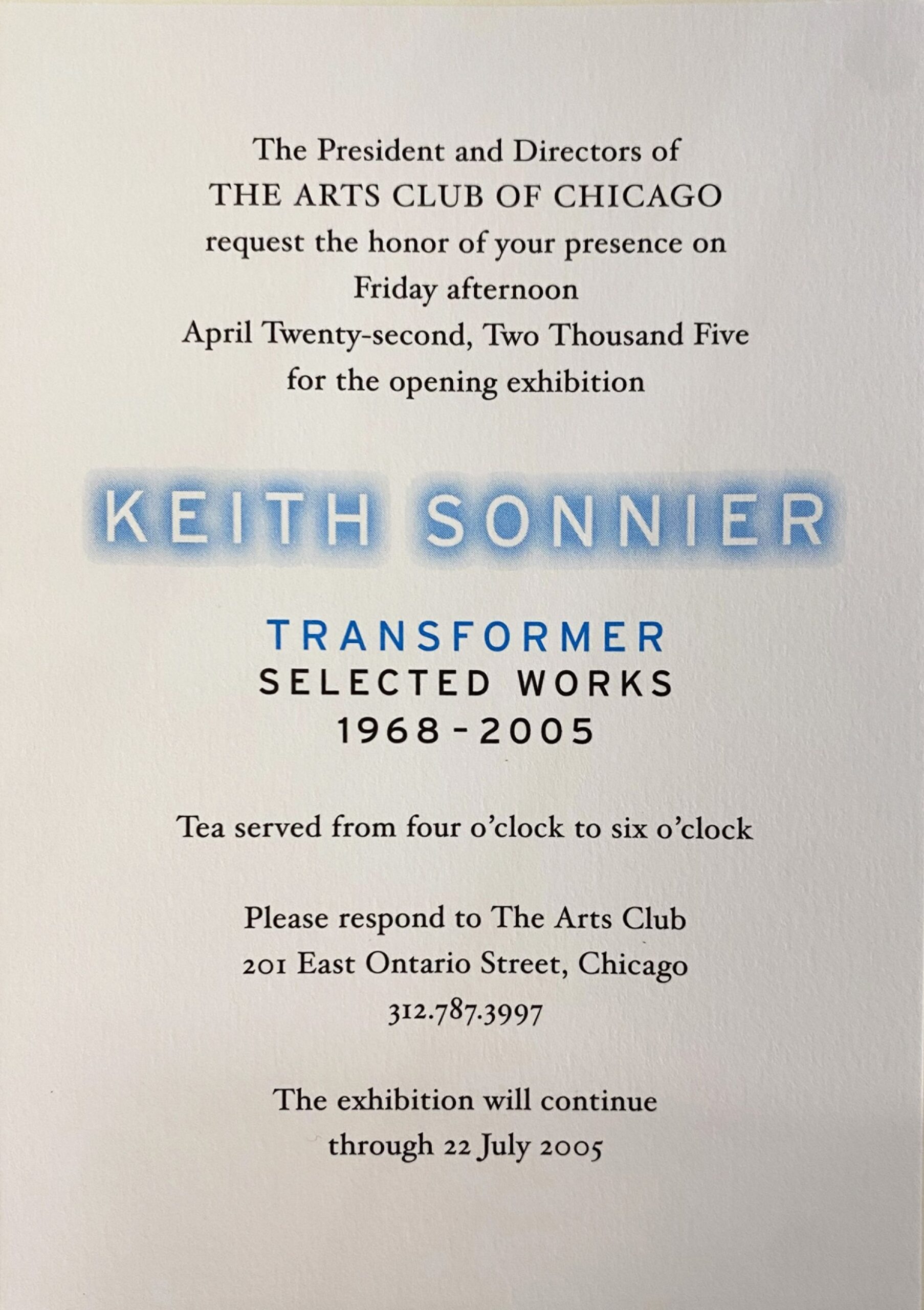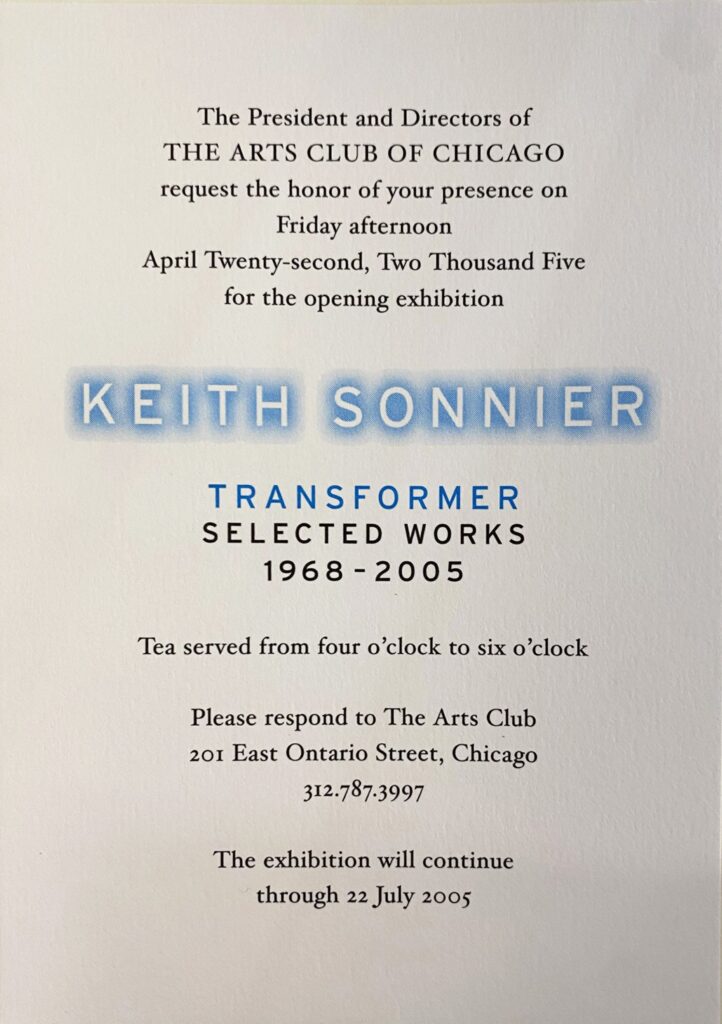Keith SonnierTransformer – Selected Works 1968–2005


Past exhibition
Keith Sonnier Transformer – Selected Works 1968–2005
About the Exhibition
“I’m fascinated by how nature and technology in the modern world exist together.”
—Keith Sonnier, 2000
Beginning in the 1960s Keith Sonnier, along with artists Eva Hesse, Barry Le Va, Bruce Nauman, Richard Serra, and Richard Tuttle, pioneered a radically different idea of sculpture by dissolving sculpture’s traditional mass, a concept art critic Lucy Lippard coined “Eccentric Abstraction.” Sonnier’s signature light sculptures, especially those using neon, are haunting in their unconventional usage of materials. Many of his early works combined disparate materials—light bulbs, neon, fluorescent light, strobe light, black light, latex, satin, bamboo, cheesecloth, string, wire—that questioned not only their usage but also the architectural context in which they were presented. Free of form and fundamental rules, they are the antithesis of the formal Minimalist investigations simultaneously taking place at the time.
Pluralism continually asserts itself throughout Sonnier’s work and he has always been fascinated by how nature and technology exist together in the modern world. He made many trips abroad during the 1970s and 1980s, to India, Japan, Bali, and Brazil, producing hybrid pieces that meld indigenous cultures with both primitive and high-tech materials. In 1990, upon his return home to Grand Mamou, Louisiana, Sonnier produced the eccentric “Tidewater” series, composed of fluid neon and found objects. These were followed by the exuberant, almost figurative Cat Doucet series (1996), named after the notorious debauched Louisiana sheriff. The Depose (1996) pieces, of inflated material and constricting neon, mime the exhausted physical and psychological corporal body after a protracted divorce. Tailgate (2000) explores Sonnier’s other light and glass interests by incorporating windshields and automobile lights. The recent series of the architectural Baumgate pieces (2000), the lush fauna Blatt (German for leaf) series (2000), and the stoic, emblematic Rex (2003) all reflect his varied and continued range of pursuits.
About the Artist
Keith Sonnier is from Grand Mamou, Louisiana, 200 miles west of New Orleans, where the panhandle begins and the bayou ends. He grew up with a host of colorful relatives: traiteurs (healers) and house painting uncles that painted everything from oil rigs and water towers to elaborate scenes on the sides of barns. His father ran a hardware store, a catalyst for his later interest in things electrical, mechanical, and video.
In the 1960s Sonnier attended college at Rutgers University where Fluxus was happening; artist Robert Watts, writer Robert Morris, and dancer Yvonne Rainer were teaching; and artists George Segal and Roy Lichtenstein were neighbors. Sonnier was the first to bring video projection into an art context with his works from the 1970s, which began with an interest in narrative, progressed to object manipulation, experimentation with the material, and the transmission of television. His later investigations in the mid-1990s with the Tesla pieces (Nikola Tesla was a Serbian physicist who discovered the principles of alternating current in 1881) used raw electricity and fences of “hot” wires.
Sonnier has completed many large architectural and public installations all over the world: Joseph E. Seagram & Sons Inc, NY (1981); New Jersey Department of Transportation, Trenton (1990); Munich International Airport (1989–92); Ronald Reagan Building and International Trade Center, Washington DC (1998); and St. Franciscus Church, Steyr, Austria (2001).